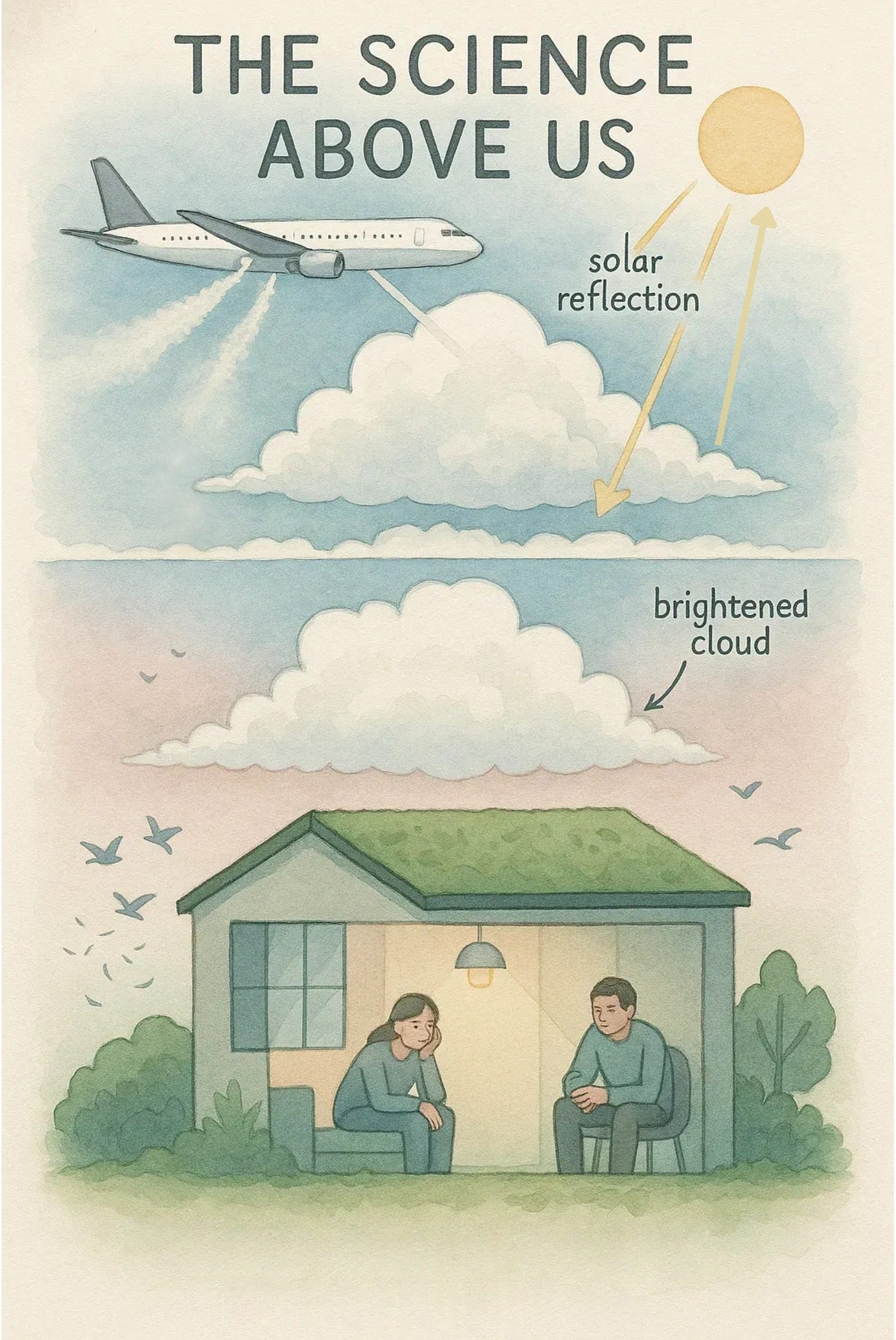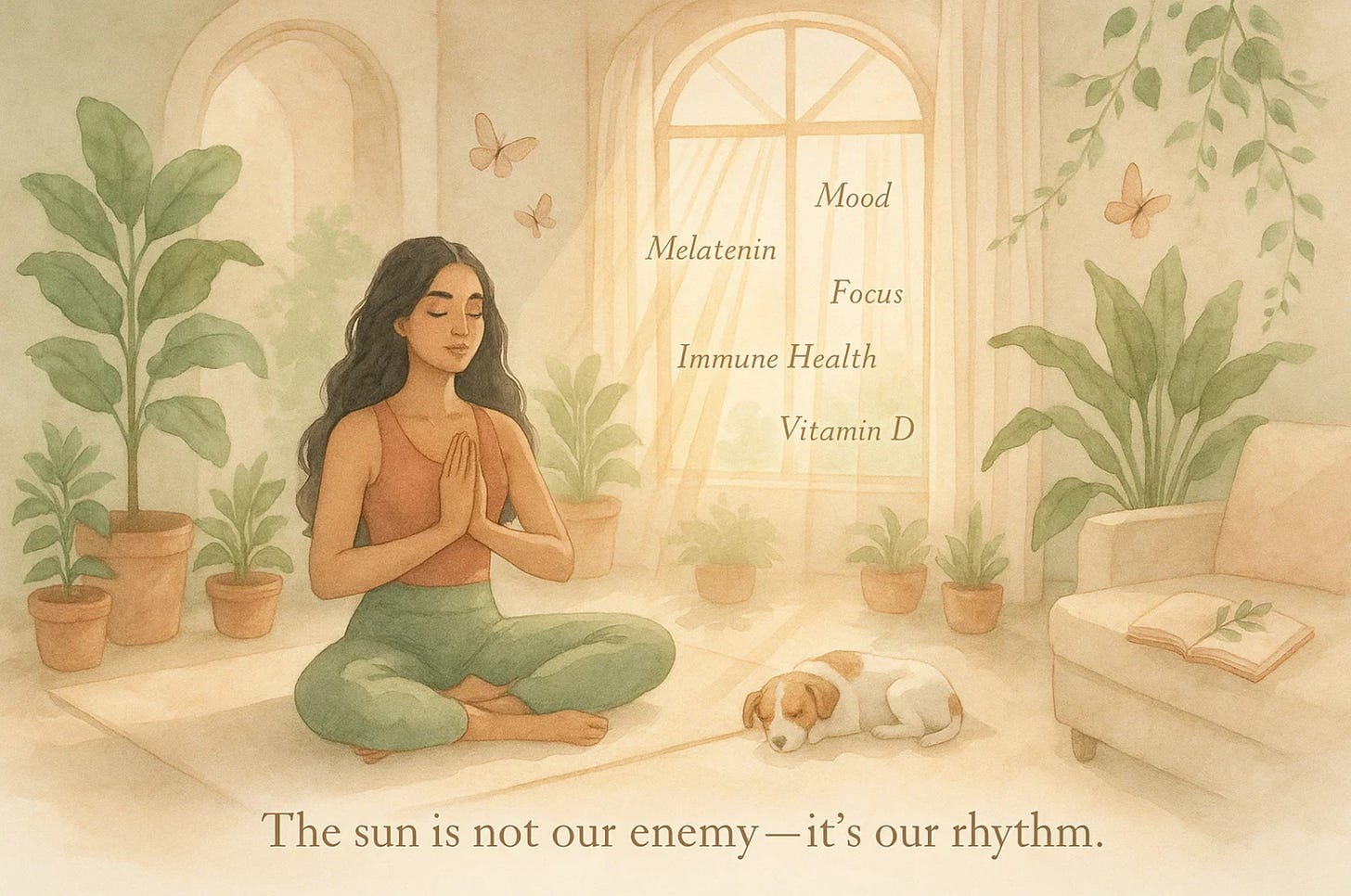Sunlight and the Dilemma No One’s Talking About
Earlier this year, the government announced something that at first sounded interesting but quickly frightened me. A £50 million investment into geoengineering research, specifically, solar radiation management (SRM).
Experiments aimed at reflecting the sunlight back into space, with the goal of cooling the planet.
It sounds like science fiction but it’s not. It is very real.
🤔 There’s something quietly unsettling about the idea of trying to fix climate change by blocking the sun.
And yet, that’s exactly what the UK is now exploring and it scares me!
The Proposed Plan
One idea is to spray fine, reflective particles into the atmosphere. Another is to use seawater to brighten clouds so they can reflect more light.
The Theory?
Less sunlight = lower surface temperatures = fewer tipping points triggered by global warming.
When you think about the situation in this isolated manner it could make sense…
But as someone who works at the intersection of design, wellness, and environmental health—this raises some serious questions for me.
Sunlight isn’t just about temperature or visibility, it’s biology.
Nothing works in isolation, and everything is interconnected.
☀️ Sunlight and Our Bodies
Our bodies are hardwired to respond to sunlight.
It’s how we regulate our circadian rhythms, how we produce melatonin at night and serotonin during the day, how we sleep, how we focus, how we feel.
Block sunlight—even partially—and we’re not just tweaking the weather.
We’re disrupting the very systems that keep our mood stable, our hormones balanced, and our immune systems functioning.
The official line is that these outdoor experiments will be small, rigorously assessed, and environmentally safe.
But there’s still so much we don’t know.
There’s no global agreement on governance.
No real data on long-term impacts. And if the past few decades have taught us anything, it’s the simple fact that:
Interventions with the best intentions can still cause harm.
We’ll be the test subject of an unknown experiment and that terrifies me.
Yes, we desperately need to act on climate. But we also need to remember: the sun isn’t our enemy.
It’s how we’ve evolved. It’s the rhythm our biology depends on, and the rhythm that nature has followed for millions of years.
From the cycles of plants and pollinators to the migration of birds and flowers blooming, sunlight isn’t just a climate factor—it’s the pulse of life itself.
And one of the things I find most frustrating is how often the sustainability movement and health are treated as separate conversations.
Decisions are made with one lens in mind, but rarely both.
👉 What Does This Mean?
I don’t believe we can afford to split anymore - health is part of the ecosystem.
This is where Building Biology offers a useful lens.
It’s not about rejecting technology or progress, but it’s about asking: how do we move in ways that support the environment and our biology?
Climate resilience shouldn’t mean dimming the sky.
Climate resilience should mean rethinking how we live.
Geoengineering might be an emergency brake—but pulling it without fully understanding the cost feels risky.
😒 I’m not comfortable living in a global experiment we might not be able to reverse.
Most people in the UK already struggle with low vitamin D.
Blocking sunlight further could impact our sleep, hormones, immunity, and so much more.
If we’re not careful, we risk solving one crisis while quietly creating another.
So here’s the question I’m left with:
Can we tackle climate change without potentially sacrificing health in the process?
And what might it look like to honour both?







